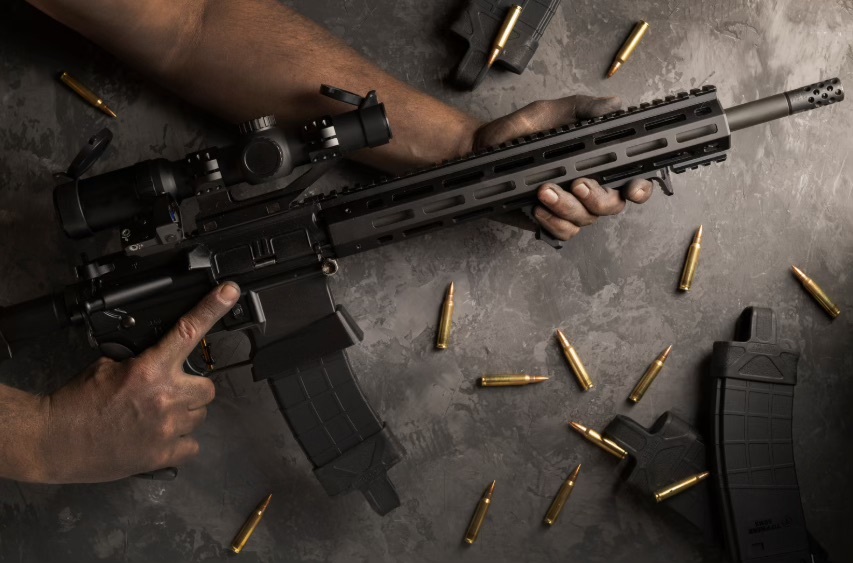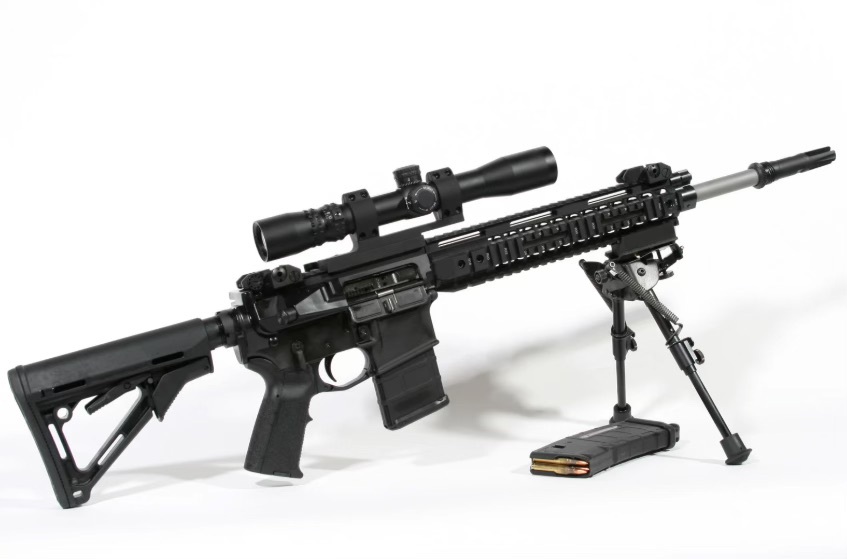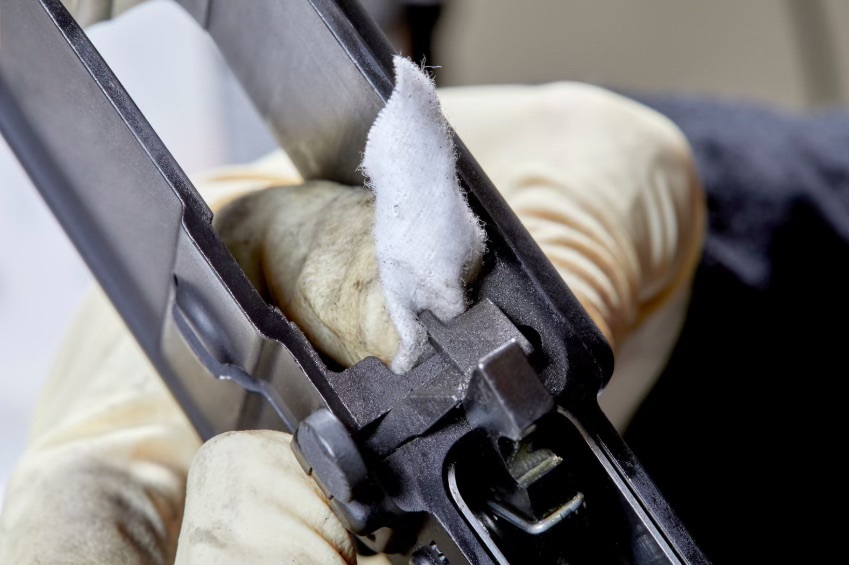Selecting the right barrel length for your 300 Blackout rifle can significantly impact your shooting experience. Whether you're building a custom AR-15 platform rifle or upgrading an existing one, barrel length affects everything from ballistic performance to maneuverability.
The 300 Blackout cartridge was specifically designed to provide impressive performance in shorter barrels, but determining the optimal length depends on your specific needs and shooting style. Many firearm enthusiasts find themselves confused about which barrel length will maximize their rifle's potential while meeting their practical requirements.
In this comprehensive guide, we'll explore the critical factors that influence barrel selection for 300 Blackout rifles, helping you make an informed decision when shopping at AR15 Parts for your next build or upgrade.
Understanding the 300 Blackout Cartridge
The 300 AAC Blackout (7.62×35mm) was developed to provide 7.62×39mm ballistic performance in a package compatible with standard AR-15 rifles. This innovative cartridge was designed specifically to function optimally in shorter barrels, a characteristic that sets it apart from many other rifle calibers.
The 300 Blackout achieves two distinct performance profiles: supersonic with standard weight bullets (110-125 grains) for range and penetration, and subsonic with heavier bullets (220-240 grains) for suppressed shooting. This versatility makes barrel length selection particularly important, as it directly impacts the cartridge's intended performance envelope.
Unlike cartridges that require longer barrels to achieve complete powder burn, the 300 Blackout was engineered to reach optimal velocity in barrels as short as 9 inches. This design consideration makes it particularly well-suited for compact rifles, SBRs (Short Barreled Rifles), and other applications where maneuverability is valued.
Understanding these foundational characteristics of the 300 Blackout helps explain why barrel length selection for this cartridge differs from conventional wisdom applied to other calibers. The right barrel length balances ballistic performance, handling characteristics, and intended use case.
How Barrel Length Affects Velocity and Performance
Barrel length has a direct relationship with bullet velocity in any firearm system, but this relationship is particularly nuanced with the 300 Blackout cartridge. Here's how barrel length impacts performance:
Velocity Changes
With the 300 Blackout, each inch of barrel length typically adds about 25-30 fps (feet per second) to bullet velocity, significantly less than the 50-100 fps per inch seen with cartridges like 5.56 NATO. This reduced velocity gain per inch occurs because the 300 Blackout powder charge is designed to burn efficiently in shorter barrels.
For example, a 125-grain supersonic load might achieve the following diminishing returns as barrel length increases past certain thresholds:
- 2,175 fps from a 9" barrel
- 2,250 fps from a 12" barrel
- 2,350 fps from a 16" barrel
Terminal Performance
While velocity affects terminal ballistics, the 300 Blackout maintains effective performance across various barrel lengths. Even from shorter barrels, supersonic loads deliver sufficient energy for hunting medium game within reasonable distances. Subsonic loads, which prioritize quiet operation over velocity, show even less performance variation across different barrel lengths.
The 300 Blackout's ability to maintain consistent performance regardless of barrel length is one reason it has become popular for applications requiring compact firearms. When selecting components from AR15 Parts, understanding this relationship helps you choose a barrel length that matches your performance expectations.
Popular Barrel Length Options for 300 Blackout
The 300 Blackout platform offers several barrel length options, each with distinct advantages for different applications. Let's examine the most common choices:
16-inch Barrels: The All-Purpose Standard
The 16-inch barrel represents the most versatile option for 300 Blackout rifles. At this length, rifles remain non-NFA items (no special tax stamp required) while delivering excellent ballistic performance. The 16" 300 BLACKOUT Barrel - Wilson Combat - Ranger exemplifies this category, offering match-grade accuracy with superior durability.
Advantages of 16-inch barrels include:
- Maximum legal length without NFA regulations
- Optimal velocity for supersonic loads
- Better sight radius on traditional setups
- Balanced handling characteristics
- Extended effective range
10-12 inch Barrels: Tactical Advantage
Mid-length barrels in the 10-12 inch range represent a sweet spot for tactical applications, though they require NFA registration as Short Barreled Rifles (SBRs). These barrels offer significant maneuverability advantages while still providing solid ballistic performance.
These barrels excel in:
- CQB (Close Quarters Battle) scenarios
- Vehicle operations
- Home defense situations
- Suppressed shooting applications
8-9 inch Barrels: Maximum Compactness
The shortest practical barrels for 300 Blackout typically measure 8-9 inches. These ultra-compact options prioritize maneuverability over maximum velocity, making them ideal for specialized tactical applications.
Key benefits include:
- Minimal length with suppressor attached
- Excellent balance with suppressed shooting
- Optimal for confined spaces
- Maximized handling speed
Each length category serves specific purposes, and your selection should align with your intended use. For general-purpose applications, the 16" 300 BLACKOUT Upper - Heavy Parkerized Barrel - 12" Rail offers an excellent ready-to-install option that balances performance with practical considerations.
Supersonic vs. Subsonic Considerations
One of the 300 Blackout's most distinctive features is its dual-purpose design for supersonic and subsonic applications. This versatility significantly influences barrel length selection based on your primary shooting purpose.
Supersonic Loads and Barrel Length
Supersonic loads (typically 110-150 grain bullets) benefit more from longer barrels than their subsonic counterparts. These faster-moving projectiles gain velocity with additional barrel length, though with diminishing returns beyond 16 inches.
When using supersonic loads, consider:
- 16-inch barrels maximize velocity potential for hunting applications
- Medium-length barrels (12-14 inches) provide a good balance of velocity and handling
- Even short barrels deliver adequate velocity for effective terminal performance at moderate ranges
Subsonic Loads and Barrel Length
Subsonic loads (typically 200-240 grain bullets) show minimal velocity changes with barrel length variations. These heavier, slower projectiles reach their terminal velocity quickly and don't benefit substantially from extended barrels.
For subsonic applications:
- Shorter barrels (8-10 inches) provide excellent handling without significant performance loss
- Suppressed shooting benefits from a compact overall length
- Powder burn efficiency remains high even in shorter barrels
Finding Your Balance
If you primarily shoot one type of ammunition, you can optimize barrel length accordingly. However, most 300 Blackout users appreciate the cartridge's versatility and want performance with both load types.
A middle-ground approach often works best:
- 10-12 inch barrels excel with subsonic loads while maintaining acceptable supersonic performance
- 16-inch barrels provide maximum versatility with slight compromises for subsonic use
Understanding your primary shooting purpose helps determine the optimal barrel length for your needs. The versatile nature of the 300 Blackout means even compromises deliver satisfactory performance across the board.
Barrel Profile Considerations

Beyond length, barrel profile significantly impacts your 300 Blackout rifle's handling, accuracy, and heat management. Different profiles offer varying benefits depending on your shooting style and application.
Lightweight Profiles
Lightweight or "pencil" profiles minimize overall weight, making the rifle more maneuverable and comfortable for extended carry. These thinner barrels work particularly well in shorter configurations where weight distribution is critical.
Key considerations for lightweight profiles:
- Faster handling dynamics
- Reduced fatigue during extended use
- Quicker cooling between shots
- May experience a greater point-of-impact shift during heating
Medium/Government Profiles
The classic medium or "government" profile offers a balanced approach, with a thinner profile under the handguard and a thicker profile toward the muzzle. This design provides reasonable heat management while keeping the weight moderate.
Benefits include:
- Good balance between weight and heat capacity
- Standard compatibility with most components
- Moderate heat dissipation capabilities
- Versatile performance across various applications
Heavy/Bull Profiles
Heavy bull barrels maximize rigidity and heat absorption at the cost of increased weight. These thicker barrels maintain accuracy during sustained fire but add significant weight to the rifle.
Advantages of heavy profiles:
- Superior accuracy during rapid fire
- Minimal point-of-impact shifts as temperatures increase
- Extended accurate barrel life
- Better harmonics for precision applications
For most 300 Blackout applications that value versatility, a medium profile represents the optimal compromise. However, purpose-built rifles might benefit from profile-specific optimizations based on their intended use case.
Matching Barrel Length to Your Application
The "right" barrel length for your 300 Blackout rifle ultimately depends on how you plan to use it. Different applications benefit from specific barrel length categories:
Home Defense
For home defense applications, maneuverability is paramount when navigating confined spaces. Consider:
- 10-12 inch barrels offer excellent handling in tight environments (NFA rules apply)
- 16-inch barrels with collapsible stocks provide a legally-compliant alternative
- Barrel length affects sound levels, especially indoors
- Shorter barrels facilitate faster target acquisition in defensive scenarios
Hunting
Hunters using 300 Blackout have different requirements based on their quarry and hunting environment:
- 16-inch barrels maximize velocity for ethical harvesting at extended ranges
- Medium-weight profiles balance field carry comfort with accuracy
- Consider the terrain and typical shot distances in your hunting area
- Supersonic ammunition typically delivers better terminal performance for hunting
Tactical/Range Use
Recreational and tactical shooters might prioritize different characteristics:
- Competition shooters often prefer 16-inch barrels for stability and sight radius
- Tactical training benefits from lengths that match operational equipment
- Consider suppressor use in your overall length calculations
- Balance between handling speed and precision based on your shooting style
Each application presents unique considerations that should guide your barrel selection process. By matching barrel length to your specific needs, you'll maximize the 300 Blackout's potential for your particular use case.
Suppressor Considerations and Barrel Length

The 300 Blackout was specifically designed with suppressed shooting in mind, making suppressor compatibility an important factor when selecting barrel length.
Overall Length Calculations
When adding a suppressor (typically 6-8 inches), the total weapon length increases significantly. Consider:
- A 16-inch barrel with a 7-inch suppressor creates a 23-inch front end
- An 8-inch barrel with the same suppressor results in a more manageable 15 inches
- Overall length affects maneuverability in vehicles, structures, and confined spaces
- NFA regulations apply to both short barrels and suppressors
Gas System Interaction
Barrel length affects gas system selection, which in turn impacts suppressed performance:
- Shorter barrels typically use pistol-length gas systems
- These compact gas systems can create more backpressure when suppressed
- Adjustable gas blocks help manage this increased pressure
- Proper gas tuning becomes increasingly important with shorter barrels
Velocity and Sound Considerations
Barrel length influences the sound signature with suppressors:
- Subsonic ammunition must remain below 1,050 fps to prevent sonic crack
- Longer barrels may push borderline subsonic loads into supersonic territory
- Shorter barrels provide margin to ensure subsonic performance
- Finding the right combination of barrel, ammunition, and suppressor requires testing
For suppressed applications, barrel lengths between 8-12 inches typically offer the best balance of performance and handling, though this requires navigating NFA regulations. If suppressed shooting is your primary concern, these considerations should heavily influence your barrel selection process.
Frequently Asked Questions
What is the minimum barrel length for effective 300 Blackout performance?
The 300 Blackout cartridge was specifically designed to achieve complete powder burn and optimal performance in barrels as short as 9 inches. While barrels shorter than 9 inches will function, you'll experience diminishing ballistic performance, increased muzzle flash, and potentially reliability issues.
For practical purposes, 8-9 inches represents the lower threshold for effective performance, though these lengths require NFA registration as Short Barreled Rifles (SBRs).
How much velocity do I gain with a longer 300 Blackout barrel?
With 300 Blackout, each additional inch of barrel length typically adds approximately 25-30 feet per second (fps) to bullet velocity. This is notably less than other rifle cartridges like 5.56 NATO, which gains 50-100 fps per inch.
For example, extending from a 9-inch to a 16-inch barrel might add about 175-210 fps. This modest velocity gain explains why many shooters opt for shorter barrels with 300 Blackout compared to other calibers.
Will a 16-inch barrel work well for both supersonic and subsonic loads?
Yes, a 16-inch barrel works effectively with both supersonic and subsonic 300 Blackout loads. With supersonic ammunition, the longer barrel maximizes velocity potential, extending effective range and terminal performance.
For subsonic loads, while the added length isn't necessary for velocity, it doesn't negatively impact performance. The 16-inch barrel represents the most versatile option that balances legal compliance (no NFA tax stamp required) with performance flexibility for both ammunition types.
Does barrel length affect reliability with 300 Blackout?
Barrel length has minimal impact on reliability with properly configured 300 Blackout systems. The cartridge was engineered to function in short barrels, meaning even compact systems can operate reliably with appropriate gas system tuning.
However, extremely short barrels (under 8 inches) may experience incomplete powder burn, potentially causing reliability issues with certain ammunition types. Proper gas system selection and buffer weight tuning are typically more important for reliability than barrel length itself.
How does barrel length affect suppressor performance with 300 Blackout?
Barrel length significantly impacts overall weapon length when using suppressors. Shorter barrels (8-12 inches) create more manageable total lengths when adding a 6-8 inch suppressor. Additionally, shorter barrels produce lower velocities, which can help ensure subsonic ammunition remains below the sound barrier (approximately 1,050 fps).
However, shorter barrels also create higher pressure due to less time for gas expansion, potentially increasing blowback through the action when suppressed. Most dedicated suppressed 300 Blackout builds utilize shorter barrels with adjustable gas systems to optimize performance.
Final Thoughts on Choosing the Right Barrel Length for Your 300 Blackout
Selecting the optimal barrel length for your 300 Blackout rifle requires balancing performance needs, legal considerations, and practical handling characteristics. While the 16-inch barrel offers the most versatile performance without NFA restrictions, shorter options excel in specific applications, particularly for suppressed shooting.
Consider your primary use case, ammunition preference, and whether you're willing to navigate NFA regulations when making your selection. With the right barrel length, your 300 Blackout rifle will deliver the perfect balance of performance and handling for your specific requirements.
Whether building a custom rifle or purchasing a complete upper, quality components from specialized retailers will ensure your 300 Blackout performs to its full potential.
Contact AR15 Parts for Personalized Build Assistance

We at AR15 Parts are committed to helping firearm builders get the most from their custom builds. With a knowledgeable team and years of experience in the AR platform, we offer product recommendations, insights, and support tailored to your specific shooting needs.
Contact our team at AR15 Parts to get personalized assistance with your next build. Whether you're assembling your first rifle or optimizing a seasoned setup, we're here to guide you every step of the way.

